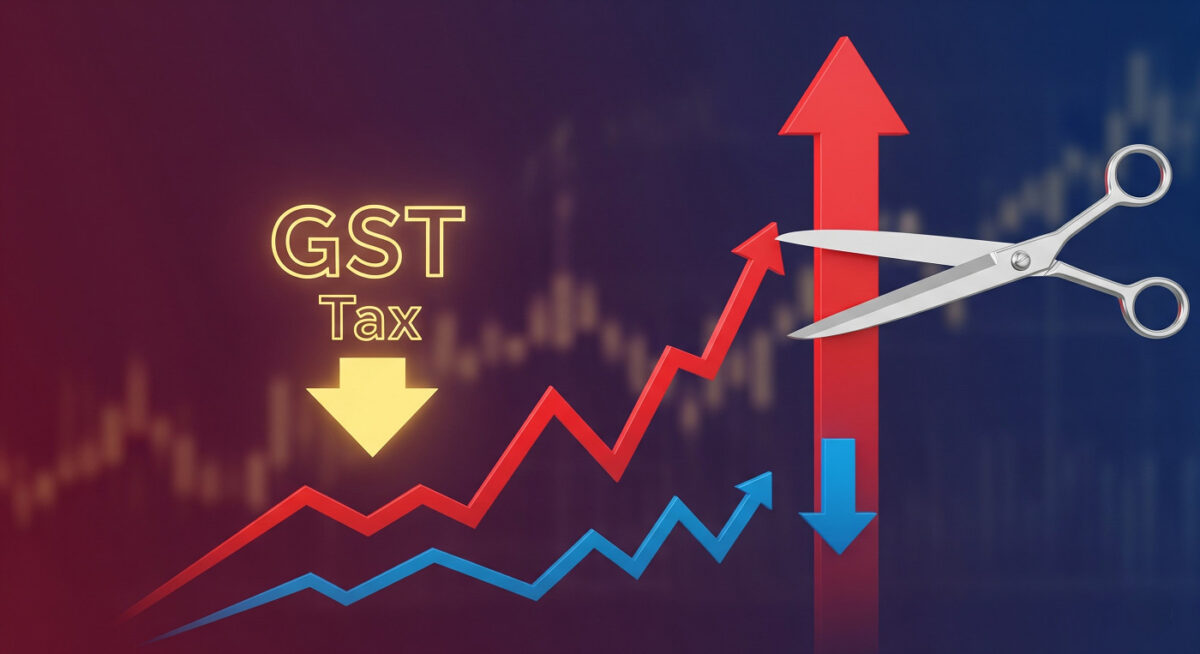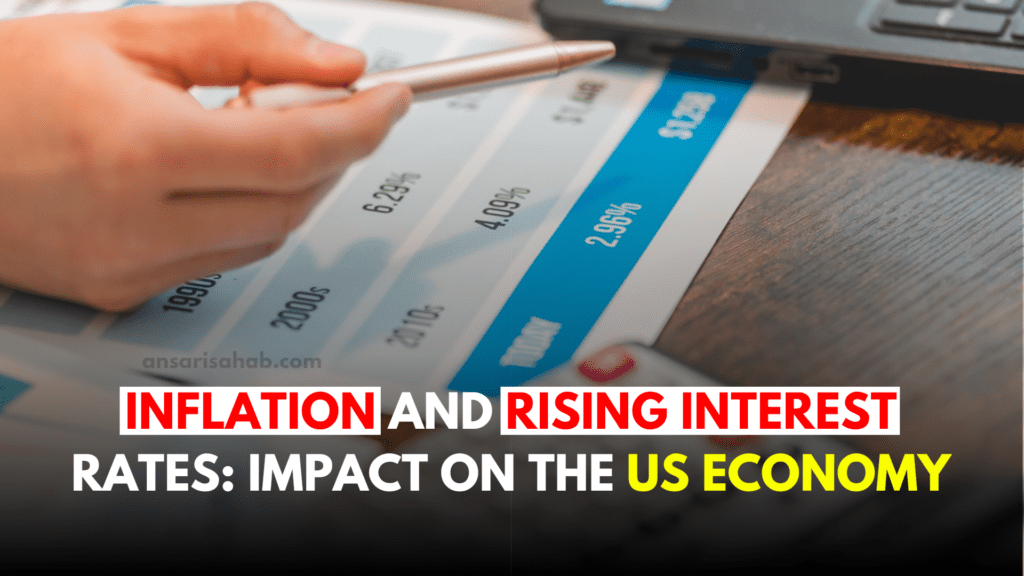GST Reforms 2025 at a glance: what’s changing and why it matters
India has signaled a sweeping GST Reforms package for 2025 that rationalises the slab structure—moving toward two core rates (5% and 18%), while reserving a higher “sin/luxury” rate (around 40%). Key consumer-sensitive tweaks include lowering GST on small cars to 18% (from 28%) and a proposal to exempt GST on health and life insurance premiums—measures aimed squarely at reviving mass-market demand and easing household budgets.
Investor takeaway: this is a consumption-first tax reset. By cutting taxes where price elasticity is high (entry-level autos, premiums), policymakers are targeting quick demand responses that can show up in quarterly prints. Markets have taken note; indices jumped on the reform signal.
GST Reforms and inflation—how tax cuts filter into CPI
Lower indirect taxes can mechanically reduce headline CPI for covered items and indirectly cool core inflation via pass-through to retail prices. Fresh 2025 polling and reporting indicate inflation has already eased to multi-year lows, setting the stage for policy flexibility if GST-driven price cuts broaden. A Reuters poll in August 2025 flagged retail inflation slipping to an eight-year low, with FY inflation tracking near the mid-3% range—close to, and in some estimates slightly above, the RBI’s own benign projection.
Where GST may help most:
- Autos & durables: A 10-percentage-point GST cut on small cars could trim on-road prices by ~8%, improving affordability for first-time buyers and nudging transport-related CPI components.
- Everyday goods down-rated: To the extent items migrate to 5% from higher slabs, near-term price stickers can fall and set a softer CPI baseline.
- Insurance exemption: Removing 18% GST on life/health premiums would not register directly in CPI food/fuel baskets but reduces household outgo, freeing income and supporting disinflationary substitution (e.g., delaying discretionary price hikes by firms that see volume tailwinds).
Net effect: GST Reforms reinforce an already benign inflation outlook in 2H-2025, especially if implementation is timely and pass-through is competitive.
Will the RBI cut rates? Reading the 2025 tea leaves
The RBI (repo at 5.50% post-August meeting) retained a neutral stance while noting a benign inflation backdrop—but also flagged external risks (notably new U.S. tariffs) as reasons to move carefully. Consensus into August suggested a hold now, cut later in 2025, contingent on sustained disinflation and growth dynamics.
Three triggers that could unlock a cut:
- Sustained sub-4% CPI prints supported by GST pass-through on consumer goods and autos.
- Growth cushioning needed against external shocks (e.g., U.S. tariffs dampening exports), making a modest rate cut a domestic-demand safeguard.
- Financial conditions & sentiment: A consumption rebound lowers margin pressure, stabilises earnings visibility, and reduces the need for tight policy, opening space for a measured easing.
Bottom line for investors: A late-2025 rate cut is plausible—not guaranteed. The RBI will likely seek confirmation that GST-induced price relief is broad-based, not just a one-off.
Sector playbook—who wins first from GST Reforms (and a potential RBI pivot)
Autos (especially small cars & two-wheelers). With GST at 18% proposed on small cars, analysts expect a swift volume response, improving operating leverage. Market reaction has already been positive for auto OEMs. Pair this with any RBI easing (cheaper auto loans), and you have a double tailwind.
FMCG & Consumer Durables. Rate rationalisation and lower effective tax on select household items can temper MRP increases and re-accelerate volumes, particularly in urban mass segments where wage growth was lagging. A cooler inflation path also restores real purchasing power.
Insurance. The proposal to exempt GST on premiums directly lowers policy costs—a clear catalyst for penetration and new business momentum in life/health. Listed insurers rallied on the headlines; sustained policy traction can re-rate the group.
Banks & NBFCs. A GST-led consumption upcycle plus potential rate cuts strengthens retail credit demand (auto, consumer, LAP), aiding NIM resilience and asset quality (via better cash-flows).
Cement & Building Materials. If rationalisation reduces effective rates on inputs/finished goods, homebuilding economics improve at the margin. Benefits are second-wave (vs. autos/insurance, which move first).
Sentiment check—what industry surveys say (GST@8)
Deloitte’s GST@8 survey shows 85% of respondents with a positive view of GST, up steadily from 59% (2022) to 84% (2024)—evidence that compliance digitisation, e-invoicing, and rate clarity are working for businesses. For investors, this matters: policy credibility reduces risk premiums and supports capex visibility.
The fiscal angle—can the Centre & states absorb revenue loss?
Slab cuts and exemptions cost revenue upfront. Economists estimate tens of billions of dollars in potential annual foregone collections, implying state-centre negotiations on compensation and timelines. Implementation speed and refund discipline will shape both market confidence and inflation pass-through (if working capital isn’t locked in refunds). Industry groups are already urging faster roll-out to avoid demand deferral.
Investor lens: policy credibility = clarity + cadence. A well-sequenced roll-out that preserves state finances will extend the reform’s life, reducing the risk of policy reversals that could jar valuations.
Market pulse—what prices are telling us
Equities, the rupee, and rate-sensitive sectors rallied as GST Reforms headlines hit, reflecting higher consumption hopes and benign inflation. Insurance stocks led recent sessions; autos and consumer names firmed. The rupee edged stronger amid the reform optimism and fading tariff fears—another sign that markets are pricing a cooler inflation path and manageable external risks.
Actionable investor checklist (2025–26)
Overweight consumption cyclicals with high price elasticity (small-car OEMs, two-wheelers, select durables). Screen for operating leverage and inventory discipline.
Add insurers leveraged to premium elasticity—watch monthly new business trends post-implementation.
Own quality lenders with strong retail books; look for management commentary on demand pipelines and NIM outlook into a potential RBI easing.
Watch fiscal-state signals: refund timeliness and compensation arrangements—key for SME cash flows and capex.
Track CPI breadth: If disinflation broadens beyond headline, rate-cut odds rise. Position duration exposure accordingly.
FAQs
The government has telegraphed an expedited timeline around late-2025 (e.g., a Diwali-time window), but final adoption hinges on GST Council processes and state alignment. Watch official communiqués for dates on slab changes and insurance exemptions.
Items with direct cuts (e.g., small cars) can reflect price changes within weeks of implementation, while broader basket effects typically phase in as supply chains re-invoice and retailers adjust MRPs. The CPI signal strengthens if pass-through is competitive.
No guarantee. The RBI wants broad-based disinflation and stable external conditions. With inflation already benign, GST pass-through could tilt odds toward a cut later in 2025 if growth risks build.
Small-car OEMs, two-wheelers, insurers, consumer durables, and retail-heavy lenders. These see both price-elastic demand and funding-cost benefits if rates ease.
Fiscal pushback from states delaying implementation, and external shocks (e.g., tariffs) that complicate the RBI’s easing path.
GST Reforms are designed to cool household costs and re-ignite consumption. If CPI disinflation endures and external risks are contained, the RBI has room to ease later in 2025. For investors, the highest-beta beneficiaries are small-ticket autos, insurers, consumer names, and retail lenders—the segments where GST pass-through and rate sensitivity intersect.
Sources:









